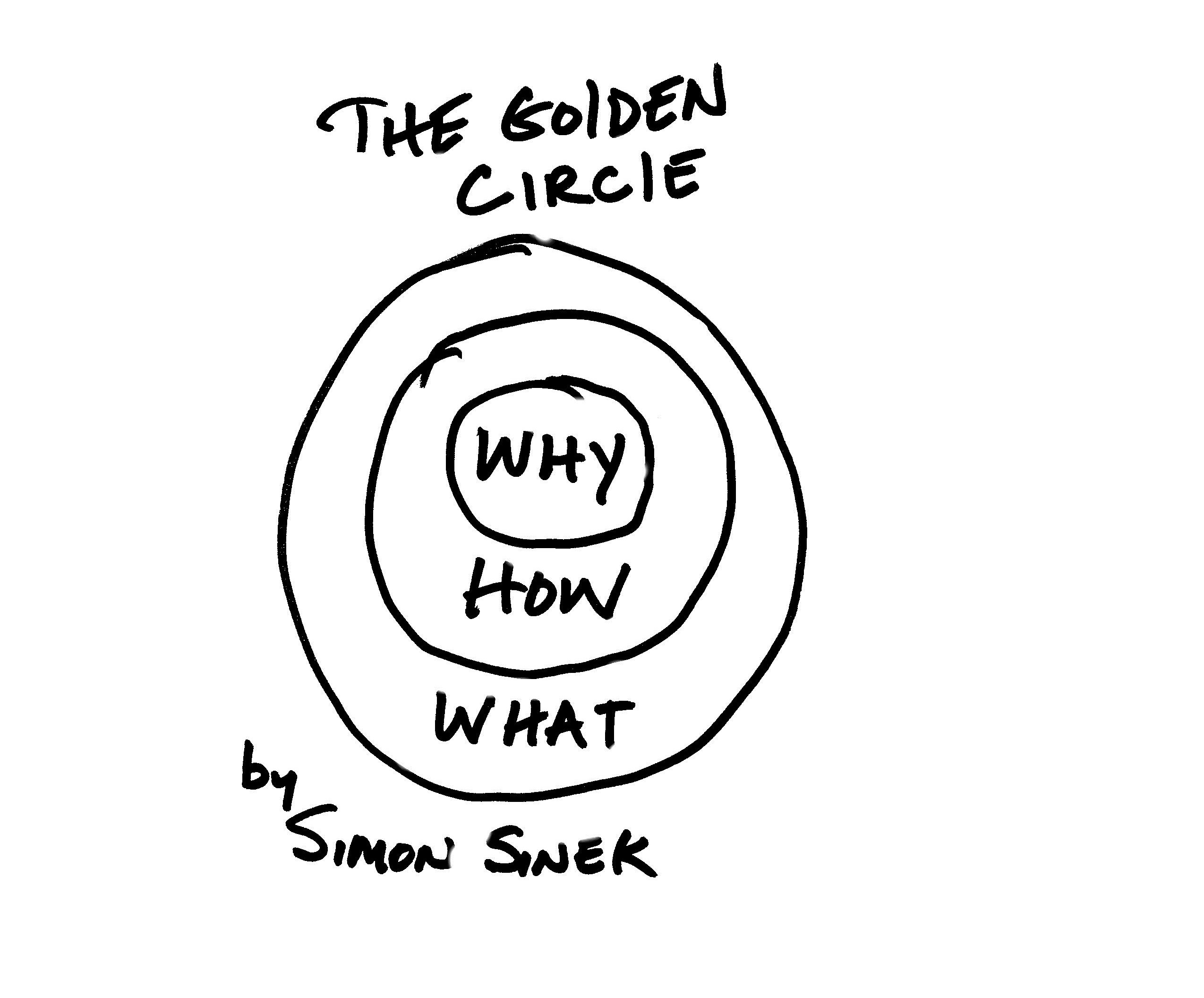From the series of interesting marketing concepts, here is one that might be useful for students, practitioners, researchers and even Musicians (!): “The Golden Circle”.
The concept was initially conceived by Simon Sinek, a British author and consultant in the fields of leadership and management. What triggered Simon to conceive the concept were intriguing questions as the following:
- “In a moment of difficulty, when there are so many people were fighting for a specific cause, why is it that certain people are chosen as leaders”?
- “If so many companies are capable of producing a specific product type, what is it that in certain fields there is a wide consumer preference although the market offer is similar”?
So in essence, what defines such general decisions by people?
In all of these situations, Simon believes to have found a pattern. And this pattern is the foundation of the concept.
The concept is visually explained through three main layers: The “WHAT“, “HOW” and “WHY“.
The outside layer, “WHAT” is normally easily explained by companies and individuals: All companies know what they produce and sell, every employer knows what they do in their jobs.
The following layer represents the “HOW”, which may not be, at times, as clear for some stakeholders: All businesses know how their products are made, what they are composed of. However, not many actually know how you do what you do. And even further, how different their business or market offer are from their competitors (What we often call in marketing, the Unique Selling Proposition).
Lastly, the inner layer represents the “WHY“. And this is the foundation of the concept: It represents the underlying reason why a business, an individual, an institution, of whatever it may be, does what it does. For example, to perhaps the vast majority of businesses, financial profit represents their main reason of existence.
However, this must not be generalized. All business have some kind impacts in society, with ranging magnitudes and impacted fields. And for many other businesses the main motivation and/or mission of the models is to enrich the life quality of others, provide a long lasting experience, solve problems of customers, bring pleasure to one’s life, have a more sustainable world and many other non-profit goals.
And even when having clear financial profit goals, organizations may also have other honest and genuine positive values that Simon believes should be emphasized. The reason for this is the following:
The Main Argument Defended by the Author is That a More Effective Communication (Implicit or Explicit) is Achieved When the Sender Makes Clear to the Receptor What their True, Honest, Genuine “Values and/or Motivations” of Their actions, Intentions and Behaviors.
And that this can be applied in any context: Business, politics and arts, for example.
Finally, the author believes that organizations would be more effective if communicating (within the model), with a “Inside-Out” approach, focusing on values. Rather than having a “Outside-In” approach, focusing on the “whats” and “hows”.
Here is Simon Sinek explaining in his own words:
Industry Case 1: Apple
One interesting practical example of the rationale of “The Golden Circle” is Apple and Steve Jobs. In the following speech given by Steve Jobs in 1997 (when returning to Apple and finding a company in a difficult situation, requiring his guidance). In this speech, Jobs calls out the need to restructure the overall strategy of the company.
As Steve states, “Our customers what to know who is Apple. What is it that we stand for“. And argues that from then on, the company should no longer communicate WHAT they do (Product offer) or HOW they do it (Product components and production methods), but rather what they believed in (WHY): “That people with passion could change the world for the better”.
So in essence, he defines that the company should not have a “Outside-In” strategy, but rather “Inside-Out”. In the end of the video he launches for the first time the excellent campaign “Thing Different”, in which Apple communicates nothing but values and honor people who changed the world for the better: Such as John Lennon, Mohamed Ali and Martin Luther King.
Industry Case 2: Ten Tree
“Ten Tree” is an online fashion brand targeted at young consumers with one general aim: Educate consumers of environmental impact that their purchase may have. How do they do this? By planting “ten trees” for every purchase. By October 2016, they claim to have ready planted an astonishing number of over 9,400,000 trees around the world!
Through products, their site, advertising and others they communicate to consumers one single message: Their genuine values and reasons WHY the business exist. As you can see, no emphasis is done on products (WHAT) of their attributes (HOW).
 Furthermore, by checking their product display one can see that their product portfolio is extremely interesting, but not exactly unique. All products can be found in various other fashion retailers.
Furthermore, by checking their product display one can see that their product portfolio is extremely interesting, but not exactly unique. All products can be found in various other fashion retailers.
So why do consumers engage with their brand? Simple: They relate with their values and mission. The relate with WHY the company exists.
And How Does It Connect With Music ?
Personally I believe that the “The Golden Circle” has a direct implication with the Music industry. But I’d like to focus on Musicians. Currently there is (Luckily!) an overload of artists, bands, records, EP’s. And how can artists stand out?
Personally, I believe records have to come with a story. Tell the listener WHY you recorded that record. It cannot simply be to make another beautiful song or album. When a great melody is followed by a GENUINE motivation from the artist, I believe there is a much greater likelihood that listeners will engage with the artist and its creation.
This is not always a simple process. Music is not the manufacturing of tangible goods and often compositions involve deep personal topics: depression, love, health difficulties, the passing of a loved one.
Example 1: The classic “Tears in Heaven” from Eric Clapton. This song was written for his son Conor that passed away at the age of 4 after falling from the 53rd floor of a building in New York. The song is lovely, and most likely would always be a success, but when the listener understands the suffering of Clapton and the motivation for writing the tune, it generates a new meaning, triggering feelings on listeners that it would never have done otherwise.
Example 2: Amy Winehouse and the song “Back to Black”. When the song was released in 2006 Amy was a world star, involved in multiple scandals following a divorce and heavy drug abuse. Her tragic and personal story was depicted in various media channels. The message from Amy in the song was clear: She was honestly being open about a very difficult personal moment. Although the melody and production (from Mark Ronson) alone are fantastic, listeners could easily identify the truth with which she sang such powerful song, as her story was constantly being discussed in the media.
In other words, the title and lyrics of the song communicated clearly WHY she had written it and what was the genuine motivation behind it. Consequently, the song became one of Amy’s greatest hits. It was a great song and it was real.
So what does this mean for singer-songwriters, for example?
When writing an album or a song and exposing it to your audience, consider: What is your HONEST, GENUINE motivation for writing it? And tell your listeners. It may not always be easy to reveal (especially when it is a sensitive personal topic such as the two examples above), but remember:
When Listeners Understand WHY You composed Your Music, There Is a Greater Likelihood They Will Engage and Follow Your Passion.




